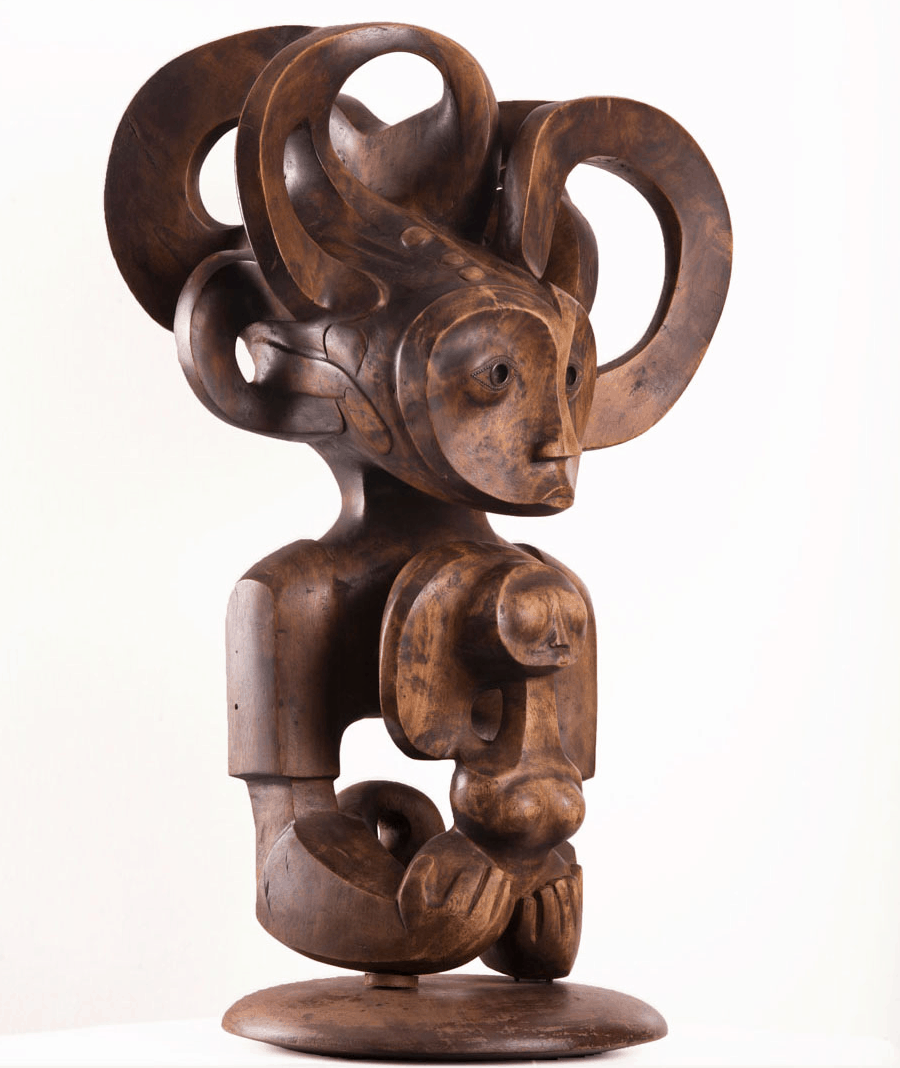African sculpture has a rich and diverse history that spans centuries. Traditional African sculpture was primarily focused on spiritual and religious themes, commemoration of ancestors and leaders, and the celebration of nature and wildlife. The influence of colonization and globalization, however, has led to a shift in the themes, styles, and materials used in African sculpture. This art form has grown to encompass social, political, and environmental commentary, playing a significant role in cultural preservation and identity. In this essay, we will investigate the key themes and styles in contemporary African sculpture, highlight notable artists and their contributions, and discuss the importance of exhibitions, museums, and galleries in promoting this art form.

Key themes and styles in contemporary African sculpture
Contemporary African sculpture explores a variety of themes, from traditional spiritual and religious motifs to more modern social, political, and environmental issues. Many artists skillfully blend these themes, using both traditional materials like wood, stone, and metal, as well as found objects and recycled materials. This integration of traditional and modern materials and techniques has resulted in a unique and innovative artistic style.
Traditional themes
- Spirituality and religion: Religion and spirituality have always been central to African art, with sculptures depicting deities, spirits, and religious figures. The influence of traditional beliefs and practices is still evident in contemporary African sculpture, as artists explore themes of spirituality and the divine.
- Commemoration of ancestors and leaders: African sculpture has historically been used to honor and remember important figures in society. Contemporary artists continue this tradition, creating sculptures that pay tribute to leaders and ancestors who have shaped their communities and cultures.
- Celebration of nature and wildlife: The natural world has always been an important source of inspiration for African artists. Contemporary sculptors often depict animals, plants, and landscapes in their work, drawing attention to the beauty and fragility of the environment.

Modern themes
- Social and political issues: Many contemporary African artists use their sculptures as a platform to address pressing social and political issues, such as human rights, inequality, and the effects of globalization on African culture.
- Human rights and equality: Artists often create sculptures that challenge societal norms and confront issues of gender, race, and class inequality. These works encourage viewers to question their own assumptions and prejudices.
- Environmental concerns: With growing awareness of environmental issues, contemporary African sculptors are increasingly incorporating themes of conservation and sustainability into their work.

Notable contemporary African sculptors
El Anatsui (Ghana)
Ghanaian artist El Anatsui has gained international recognition for his innovative and striking sculptures. Anatsui’s signature style involves using discarded materials, such as bottle caps and aluminum, to create intricate, large-scale installations that explore themes of consumption, waste, and the passage of time. His work has had a significant impact on the African art scene and has inspired many emerging artists.
Sokari Douglas Camp (Nigeria)
Nigerian artist Sokari Douglas Camp is known for her exploration of personal and cultural identity through sculpture. Using steel and other industrial materials, Camp creates powerful pieces that address themes such as migration, displacement, and the legacy of colonialism.
Chéri Samba (Democratic Republic of Congo)
Chéri Samba is a Congolese artist whose work often combines elements of painting and sculpture. Samba’s art focuses on social and political themes, challenging viewers to confront uncomfortable truths about contemporary African society.
Jane Alexander (South Africa)
South African artist Jane Alexander is renowned for her evocative sculptures that address the legacy of apartheid and
its aftermath. Her work often features haunting human and animal forms, which serve as a metaphor for the violence and oppression experienced during this dark period in South African history.

Other emerging and influential artists
There are numerous other talented contemporary African artists who continue to push the boundaries of sculpture, contributing to the richness and diversity of the art form. These include: Ousmane Sow, Francis Nnagenda, Ben Enwonwu, Henry Tayali, Bili Bidjocka, Donald Wasswa, Ernest (Methuen) Mancoba and Bruce Onobrakpeya just to mention afew.

The role of exhibitions, museums, and galleries in promoting contemporary African sculpture
Exhibitions, museums, and galleries play a crucial role in showcasing and promoting contemporary African sculpture to a global audience. Through participation in international exhibitions and biennales, such as the Venice Biennale, Dakar Biennale, and Johannesburg Art Fair, African artists are able to share their work and ideas with the world.
Museums and galleries dedicated to African art, such as the Zeitz MOCAA in South Africa, The National Museum of African Art in the USA, and The Museum of African Contemporary Art Al Maaden in Morocco, provide a platform for these artists to reach a wider audience and gain recognition for their contributions to the global contemporary art scene.
In conclusion, Contemporary African sculpture holds a unique and important position in the global art scene, challenging stereotypes and preconceived notions of African art while establishing a distinctive identity. The work of contemporary African sculptors serves as an inspiration for future generations, encouraging cultural preservation and fostering dialogue around pressing social, political, and environmental issues. It is essential that we continue to explore, support, and celebrate the diverse and innovative world of contemporary African sculpture.
FAQ
What is unique about African sculpture?
African sculpture is unique due to its rich history, diverse themes, and the integration of traditional and modern materials and techniques. Contemporary African sculpture often explores a combination of spiritual, cultural, social, political, and environmental issues, resulting in a distinctive artistic style.
What is the oldest African sculpture?
The oldest known African sculpture is the “Venus of Tan-Tan,” an ancient humanoid figure discovered in Morocco, which is estimated to be between 200,000 and 500,000 years old.





 No products in the basket.
No products in the basket.